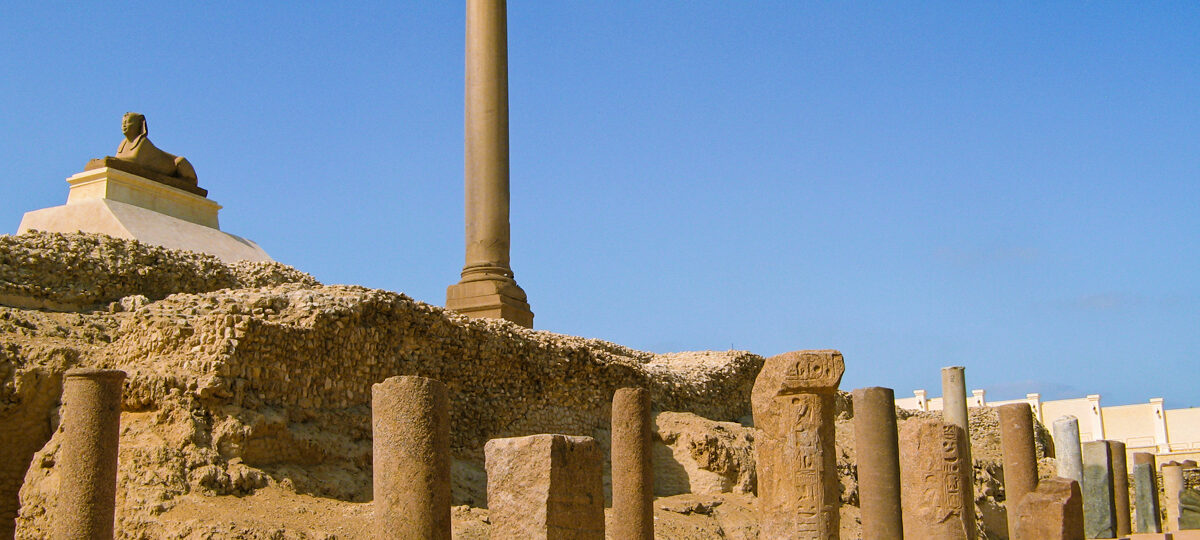Pompey’s Pillar
It’s not as cool as it first seems. In a civil war, Gaius Pompey, who was a Roman Consul and General, fought against Julius Caesar. In 48 BC, when he was on the run from Rome, a Ptolemaic pharaoh killed him in Alexandria. This single column on a rocky outcrop in the middle of Alexandria has nothing to do with Gaius Pompey.
Surprisingly, the Crusaders made up this story because they thought that the 100-foot (30-meter) red Aswan granite pillar marked the spot of the pharaoh’s tomb. The pillar, on the other hand, is a triumphal monument that was made for the Roman Emperor Diocletian in the year 300 AD. But the most important things at the archaeological site are the things that were there before the pillars.

It’s possible that this is where Alexandria’s acropolis, the Serapeum, was built.
When the first Christians came to Egypt in the first century A.D., Alexandria quickly became the religious center of the country. After a short time of adjusting, Christianity quickly spread across Egypt, pushing older religions and paganism to the edges, where the majority looked down on them.
The Serapeum, which was built to honor Alexandria’s patron god Serapis, was very different from the Christian beliefs that were common at the time. Serapis was the main god of Alexandria, so the Serapeum was built to honor him.
In 391, Patriarch Theophilus led a group of Christians to destroy the Serapeum and other statues of pagan gods in Alexandria. As far as we know, this was the first time Christians in the city did something like this. Even though this claim has been questioned in the past, some sources also say that this mob destroyed the Great Library of Alexandria.

The site of a grand temple made of marble and decorated on the inside with gold and silver is marked by a single column. The decorations in the temple used to be much more elaborate. Some of the tunnels that used to surround the complex have been fixed up so that visitors can use them again. Some of the artifacts that were kept in the temple have been found and taken back to the museum. At the Greco-Roman Museum, people will be able to see a life-size black basalt bull from the temple and a golden plaque with the year the temple was built.

